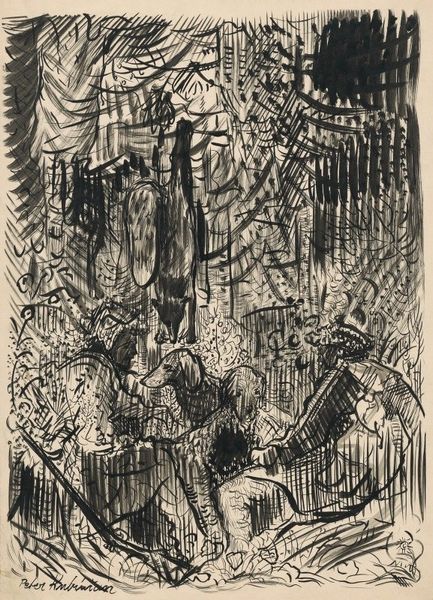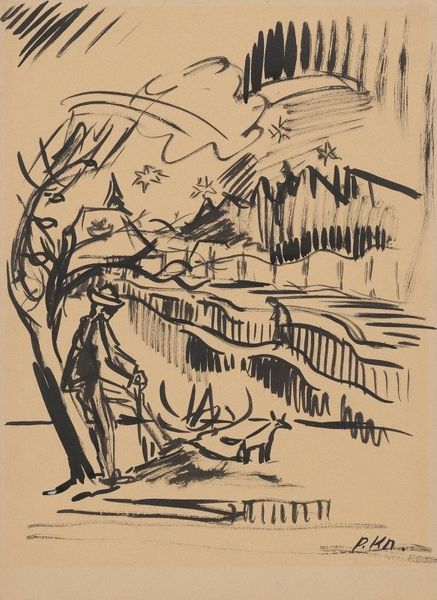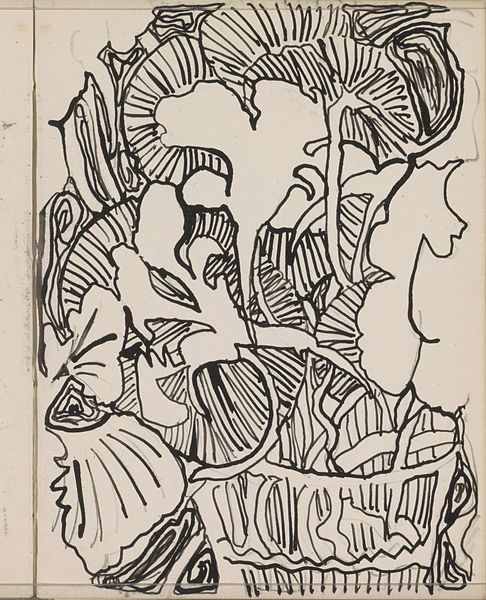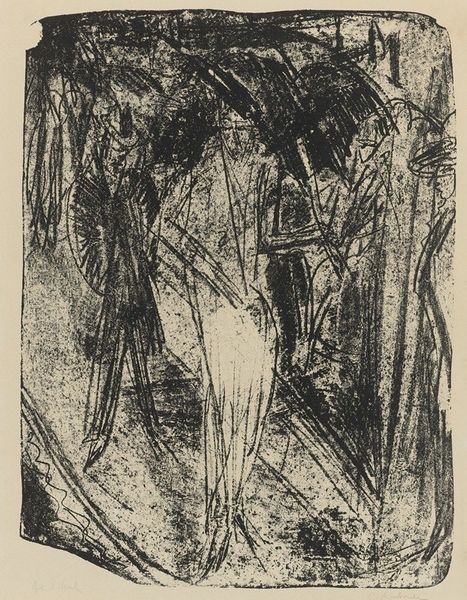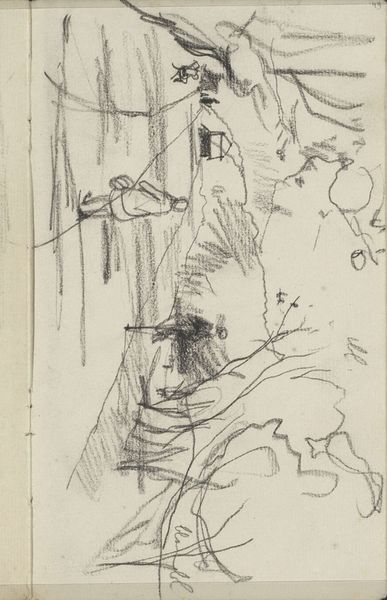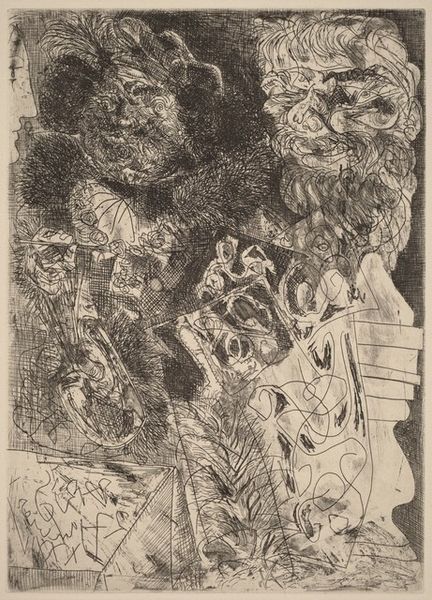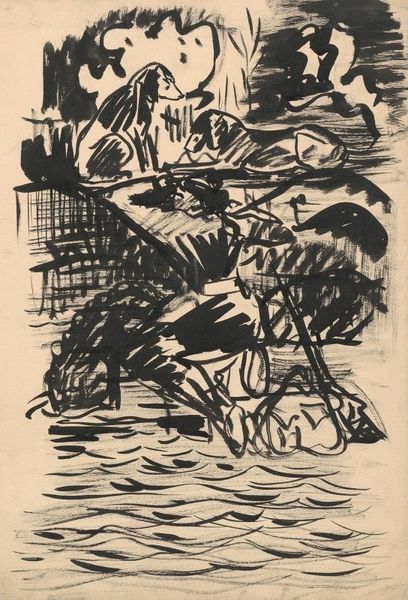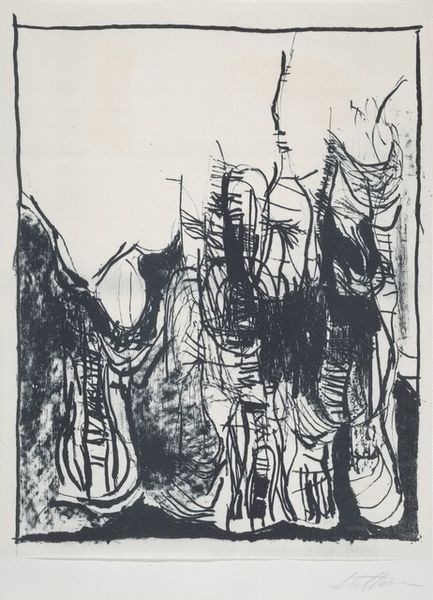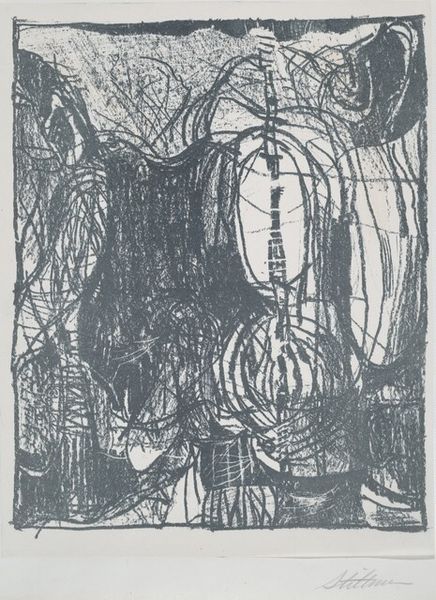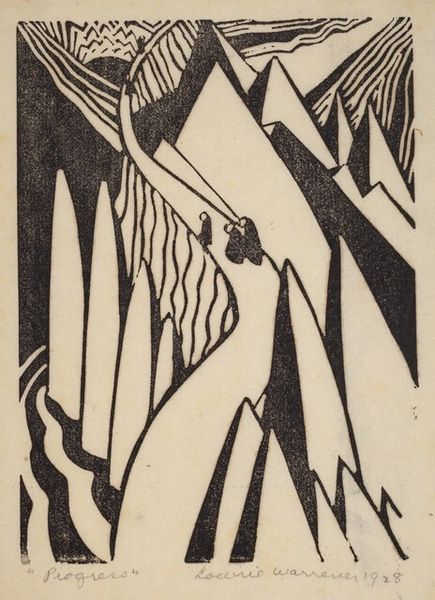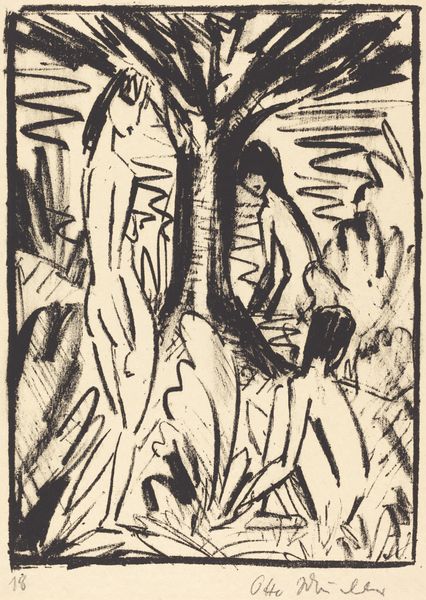
drawing, ink, pen
#
drawing
#
ink drawing
#
narrative-art
#
pen sketch
#
figuration
#
ink
#
pen
#
history-painting
Copyright: Public Domain: Artvee
Curator: This is Arnold Peter Weisz-Kubínčan's "Lamentation of Christ," created in 1940. It's an ink drawing using both pen and ink wash techniques. Editor: It's stark. The rapid strokes of ink convey immediate suffering and despair, the figures emerging and receding from the light like phantoms. Curator: The artist's technique really emphasizes the drama, doesn't it? Look at how the varying line weights articulate form and emotion. The heavy, dark lines create weight and shadow, contrasting with the lighter, sketchier areas that suggest a spiritual realm. The composition centers on the angular, grief-stricken figure of Christ, surrounded by mourners. Editor: Yes, the figures, constructed through layering, give a real insight into how social experiences leave marks, not just on the physical body, but on collective consciousness too. You know, what's most arresting is how immediate this piece feels despite the solemnity of the subject matter. It prompts consideration of the very nature of art production in such difficult historical moments. Curator: The hatching and cross-hatching build up the figures from basic geometric components. Notice the expressions, suggested with such economy of line. It's almost diagrammatic in its abstraction, which only amplifies the emotionality through stark representational choices. Editor: What about the role of the work, you know, beyond the formal execution. It asks, or makes us ask, important questions about spiritual grief in 1940, no doubt impacted by political events of the time. The application of ink lends itself to the mood, doesn’t it, lending a fragile quality appropriate to loss and fragility. Curator: Absolutely. Considering Weisz-Kubínčan’s context in the 1940s, it's fascinating how such emotional weight can be born from relatively few materials. The power lies not just in the representation, but in the suggestion, the economy of means, and their perfect execution for the work’s setting. Editor: Agreed. "Lamentation of Christ," while depicting a well-known religious scene, presents an important insight into how the materials and methods behind an artwork provide meaning when linked to the hands that labored over them, as well as their social world. Curator: An elegant testament to the visual language that arises out of somber experiences, presented here by its material construction and manipulation. Editor: Precisely; thank you. A remarkable image speaking eloquently through line, materiality, and production to create new and thought-provoking context.
Comments
No comments
Be the first to comment and join the conversation on the ultimate creative platform.

